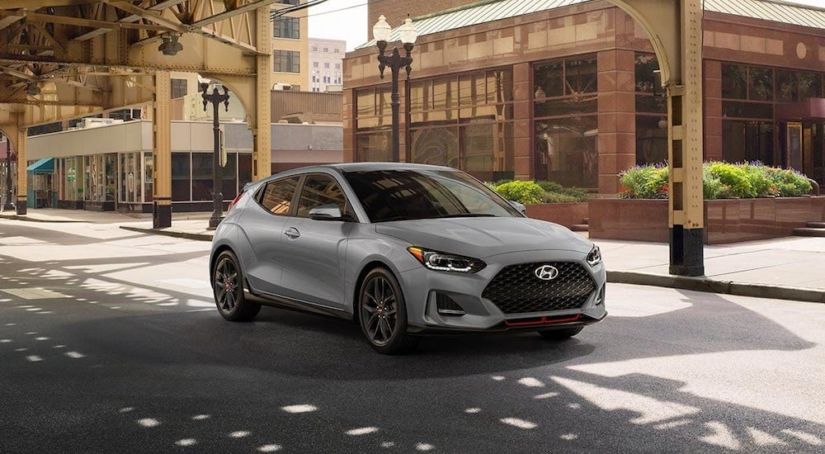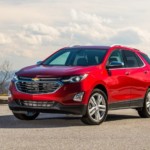One could argue that the discussion of any automaker’s standing, amidst the current automotive landscape, is bound to deliver a mixed bag in terms of response. While loyalists garner endless praise upon their brand of choice, detractors are prepared to shower limitless criticisms upon them. And it seems that few automakers might be stretched as tightly across that spectrum as Hyundai. With seven decades under their belt, the South Korean automaker has weathered criticism in equal parts to praise. And while some like to claim that Hyundai has lost some of their innovative momentum in recent years, it’s hard to agree once you’ve summoned mental images of their near-iconic Veloster.
Introduced for the 2012 model year, Hyundai had offered up the Veloster as an enthusiastic replacement for the previously discontinued Tiburon. And in its first seven model years, the Veloster coupe made an impactful impression thanks to turbocharged and roll-top variants. Factor in a distinctive design philosophy, notably different fascia it would yield, and the infamous asymmetrical door design and it’s easy to see why the Veloster proved so appealing in its originality.
And the 2018 reveal of the 2nd-gen Veloster would provide the perfect vehicle of continuation. Described as “fun to look at, fun to drive, the game-changing 2019 Veloster continues to be a unique expression of Hyundai’s audacious side”. Served up on five different trim levels (not including the sport-inspired N variant to come) the Veloster continues to play to its strengths, both perceived and agreed upon. That said, let’s take a look at what Hyundai gets right in their delivery of this next-gen Veloster.
The Basics
As mentioned above, the Veloster is served up in five trim levels (plus the Veloster N, which we’ll get to). Kicking things off, the base-level Veloster 2.0 is priced to start around $17,000 MSRP. This extends upwards to the 2.0 Premium priced at $21,250 MSRP before moving on to the Turbo options. The Turbo R-Spec is priced to start around $21,400 MSRP followed by the Turbo at $23,900 MSRP and Turbo Ultimate at $25,150 MSRP. We’ll get to some of the differentiating performance factors in each in just a little bit. But any way you cut it, the Veloster remains accessibly priced, adding to its inarguable appeal.
Distinctive Styling
Since Day One, the Veloster has been defined by the body design choices which serve to set it apart. The most notable was its asymmetrical door placement, equating to a normally proportioned driver’s side access, mirrored on the passenger side albeit with the addition of a rear-passenger access of reduced proportions. Silly? Maybe. But while divisive, this three-door design was rightfully applauded since it represented Hyundai’s willingness to put something different out there.
The Veloster’s low-stance and proportionally low roofline create a sleek aesthetic, with fin antennae evocative of the shark-like Tiburon which it replaced. Lending the Veloster an aerodynamic, air-cutting visage, its contoured body styling flows effortlessly into one of the most recognizable rear-ends our there. Truth be told, I’ve always had difficulty putting my finger on exactly what it is about the Veloster’s rear fascia that makes it so compelling, but there’s an air of athleticism reminiscent of an animal down on its haunches. The convenience of the hatch is accented by the reduced window dimensions and the angular nature of the interrupted tail lights; in fact, it’s the latter which almost serves to camouflage the presence of a hatch in the first place. Bottom-line, the design intent is clear. And in our book, unapologetic intention is cool.
And depending on the configuration selected, the inclusion of a two-tone roof adds another level of aspirational design appeal. If Hyundai wants to label the Veloster as “fun to look at”, we’re on Team Hyundai, because the Veloster is pretty easy to dig.
Unique Cabin Experience
If perception is reality then Hyundai seems insistent on crafting an interior which serves as an extension of the Veloster’s inspired outward design language. With a low seating position, the driver enjoys an expansive front vista before their eyeliner drops to the refined contours of the dash. Gauge clusters, displays and controls are simple in design but are accented with distinct color and lighting effects depending on the trim levels. And should the eye-line drift back up, the option of a heads-up display helps to convey the futuristic credibility of this next-gen Veloster. For those in search of a body-hugging cockpit, the Veloster is ideal with its supportive, bolstering seat design. Simply put, it’s a well-designed and immersive cabin experience, and it’s hard not to applaud Hyundai for what they’ve created.
Powertrain Options
Beginning with the 2.0 models, the Veloster comes equipped with a 2.0-liter four-cylinder engine paired to either a manual or automatic six-speed transmission. Delivering 147-horsepower and an estimated 34 mpg (highway), the Veloster 2.0 and 2.0 Premium are both confident and understated.
Moving along to the Turbo R-Spec, we get a 1.6-liter 4-cylinder Turbo engine paired with a 6-speed manual transmission. Horsepower ratings jump up to 201-hp, while still offering 33 highway mpg. These numbers extend upwards through the Turbo and Turbo climate trims, as well.
Infotainment Technology
When sizing up any given model, it’s hard not to think of the evolved expectations of today’s drivers as a checklist complete with boxes that need to be ‘ticked’. But while family-fare such as crossovers and SUVs come with the burden of media-centric features (to pacify the most-demanding of cargo) smaller footprints can take a more refined approach. The Veloster does exactly this, choosing to incorporate the ‘must-haves’ versus the ‘wants’. As such, it blends touchscreen interface with manual controls, is Bluetooth-enabled, connective with both Apple CarPlay and Android Auto, and even allows for wireless device charging. Avoiding any accusations of having a ‘kitchen-sink mentality’, the Veloster gives today’s driver what they need along with the option of Blue Link connected car service.
Safety & Driver Assistive Features
And while we applaud Hyundai for a refined approach in terms of infotainment, it also provides an array of safety & driver assistive features that we would expect of any innovative offering. Including, but not limited to, Lane Keep Assist and Forward Collision-Avoidance, such Driver Alert features help to create a more supportive driving experience in an increasingly distracted world. And for that, we are always grateful.
And the “N”
With Hyundai’s acquisition of BMW’s M-brand overseer Albert Biermann, Hyundai gains some sporting credibility for their newest pet project. Describing it as a “race-track capable, everyday sports car” the intention is to offer a vehicle equipped to perform on road, road course and autocross course alike. And by all accounts Hyundai is entirely successful, with their pairing of a 2.0-liter turbocharged I4 engine and six-speed manual transmission delivering a 250-hp, 260 lb-ft torque rating complimented by a diminutive footprint and the iconic styling we’ve praised thus far. Add in the option of a 275-hp Performance Pack, and it’s easy to see why so many enthusiasts are interested in the Veloster N.
In fact, Hyundai’s placement of the Veloster N under the $30,000 price point makes it an instant rival for those enthusiasts who might otherwise be courted by a WRX or GTI. And while loyalists for either might never feel the compulsion to jump lines, the ability of the Veloster to compete with such mainstays in both concept and execution might be the biggest compliment we could pay it.

Final Thoughts
Behind the wheel of the Veloster it’s easy to appreciate a more refined and athletic performance than we’ve ever seen. We can credit a more stiff design, and the substitution of a rear multilink suspension for the torsion-beam rear axle which preceded it. That said, the Veloster delivers confident chassis response in or outside a curve, with a confident suspension that maintains smoothness on almost every surface.
Despite everyone having a right to their own opinions (and the lack of likelihood in my ever purchasing a Veloster) it’s hard to get behind any criticisms being levied at it. Accessibly-priced, and rife with upgrading options, the Veloster might be one of the most fearless economy vehicles out there. Distinctively-styled and unapologetically unique it aspires to cater to a variety of driver-types, and the array of variants offered up positions the 2nd-gen Veloster successfully against any other rally-inspired coupe on the road today. And if the Veloster is an indication of where Hyundai’s innovation can take them, we’re excited to see what might materialize in the years to come.
For us, the Turbo lineup’s R-Spec and the upcoming Veloster N are the two stand-outs, with the former reflecting greater refinement while ticking all the right boxes and the latter appealing to our performance-minded sensibilities. So how much has Hyundai ‘gotten right’ with the 2019 Veloster? In our minds, pretty much everything.



